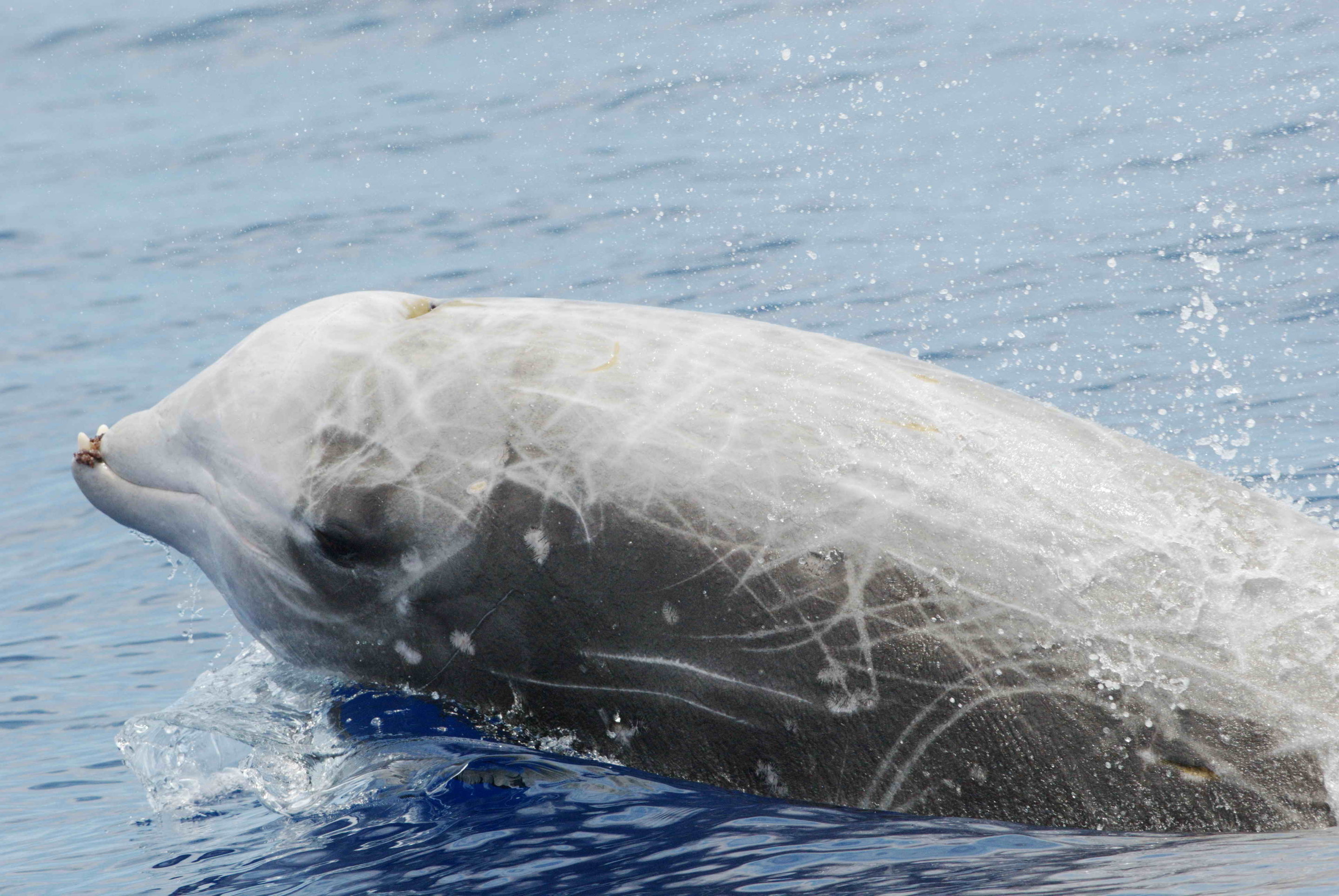Behavior and Communication of Spade-Toothed Beaked Whales: Spade Toothed Beaked Whales

Spade toothed beaked whales – Spade-toothed beaked whales are highly social creatures with complex behaviors. They live in groups of up to 15 individuals, but larger groups of up to 100 have been observed. These whales are known for their cooperative feeding strategies, where they work together to herd and capture prey. They use echolocation to locate prey and navigate their environment. Spade-toothed beaked whales also have a unique vocal communication system, which they use to communicate with each other over long distances.
Echolocation Abilities
Spade-toothed beaked whales use echolocation to navigate their environment and locate prey. They emit high-frequency clicks that bounce off objects in their surroundings. By listening to the echoes, they can create a mental map of their environment and locate prey. Spade-toothed beaked whales have one of the most powerful echolocation systems of any whale species, which allows them to detect prey at great distances.
Vocal Communication
Spade-toothed beaked whales have a complex vocal communication system. They produce a variety of clicks, whistles, and pulsed calls. These calls are used to communicate with each other over long distances. Researchers believe that spade-toothed beaked whales use their vocalizations to maintain contact with each other, coordinate feeding activities, and defend their territory.
Mating and Reproductive Behaviors
Spade-toothed beaked whales reach sexual maturity at around 7-10 years of age. They are polygynous, meaning that males mate with multiple females. Females give birth to a single calf every 3-5 years. The gestation period is around 12 months, and the calves are born weighing around 1,000 pounds. Calves stay with their mothers for up to 2 years, during which time they learn how to hunt and navigate their environment.
Conservation and Threats to Spade-Toothed Beaked Whales

Spade-toothed beaked whales are facing several conservation challenges that threaten their survival. These challenges include habitat loss, noise pollution, and bycatch in fishing gear.
Habitat Loss
Spade-toothed beaked whales rely on deep-sea habitats for feeding and breeding. However, human activities such as oil and gas exploration, deep-sea mining, and military exercises can disrupt these habitats, making it difficult for the whales to find food and reproduce successfully.
Noise Pollution
Noise pollution from ships, sonar, and other underwater activities can interfere with the whales’ ability to communicate and navigate. This can make it difficult for them to find food, avoid predators, and maintain social bonds.
Bycatch, Spade toothed beaked whales
Spade-toothed beaked whales are often caught as bycatch in fishing gear, particularly in deep-sea fisheries. This can lead to injuries or death for the whales.
Importance of Research and Monitoring
Research and monitoring efforts are crucial for understanding the population trends and vulnerabilities of spade-toothed beaked whales. This information can help inform conservation measures and mitigate the threats they face.
Conservation Initiatives
Several conservation initiatives are underway to protect spade-toothed beaked whales and their habitats. These initiatives include:
– Establishing marine protected areas to provide safe havens for the whales
– Reducing noise pollution by regulating underwater activities
– Developing fishing gear that reduces bycatch
– Raising awareness about the importance of spade-toothed beaked whales and the threats they face
By supporting these conservation efforts, we can help ensure the survival of these enigmatic and fascinating creatures for future generations.
Spade toothed beaked whales are pretty cool creatures. They can dive really deep and hold their breath for a long time. But you know what’s even cooler? The home run derby winner. That guy can hit the ball a mile! But back to spade toothed beaked whales, they’re also pretty good at echolocation, which is like sonar for whales.
Spade toothed beaked whales are elusive creatures that spend most of their time in deep waters. They are rarely seen by humans, but their distinctive calls have been recorded by scientists. One of the most famous researchers of spade toothed beaked whales is Jhon Arias , who has spent years studying these fascinating animals.
Arias has made several important discoveries about spade toothed beaked whales, including their feeding habits and social behavior. His work has helped us to better understand these mysterious creatures.